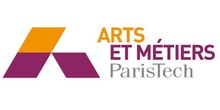Virtual, Digital and Hybrid Twins: Towards a new paradigm for simulation-based engineering
Abstract
In the third industrial revolution, “virtual twins"" emulating a physical were major protagonists. Nowadays, numerical simulation is present in most scientific fields and engineering domains. However, virtual twins are usually static. The reason is that the characteristic time of standard simulation strategies is not compatible with the real-time constraints, which is compulsory for control purposes.
Even if HPC could alleviate that issue, it renders the accessibility to the appropriate simulation resources challenging for small and medium-sized companies. Thus, in order to democratize simulation, new solutions are required. Model Order Reduction (MOR) techniques open new possibilities for more efficient simulations, among them Proper Orthogonal Decomposition – POD-, Reduced Bases – RB- and Proper Generalized Decomposition - PGD.
The next generation of twins, the “digital twins"", allowed assimilating data collected from physical sensors, to be the main tool of identifying parameters to represent the model. It also allowed for predictive capabilities based on time evolution of these parameters, in real-time, to anticipate actions. Thus, simulation-based control was possible, and implemented even in deployed computing devices (e.g. Programmable Logic Controller, PLC).
Despite an initial euphoric period, unexpected difficulties appeared. In practice, significant deviations between the predicted and observed responses were noticed. The origin of the just referred deviations is due to inaccuracy in the employed models. In order to address this inevitable “ignorance"", one approach lies in constructing “on-the-fly"" a data-driven model able to fill the gap between prediction and measurement. Indeed, Hybrid TwinTM consists of three main ingredients: (i) a simulation core able to solve complex mathematical problems representing physical models under real-time constraints; (ii) advanced strategies able to proceed with data-assimilation, data-curation and data-driven modeling; and (iii) a mechanism to adapt the model online to evolving environments (control).
Indeed, Hybrid TwinTM consists of three main ingredients: (i) a simulation core able to solve complex mathematical problems representing physical models under real-time constraints; (ii) advanced strategies able to proceed with data-assimilation, data-curation and data-driven modeling; and (iii) a mechanism to adapt the model online to evolving environments (control).
Biography
Francisco Chinesta is currently full Professor of computational physics at ENSAM ParisTech (Paris, France), at PIMM research laboratory. He was (2008-2012) AIRBUS Group chair professor and since 2013 ESI-Group chair professor on advanced modeling and simulation of materials, structures, processes and systems. He is honorary fellow of the “Institut Universitaire de France” – IUF - and Fellow of the Spanish Royal Academy of Engineering. He received many scientific awards in four different fields: bio-engineering, material forming processes, rheology and computational mechanics, in particular three of them: the Maurice Couette prize awarded by the French association of rheology, the ESAFORM prize awarded by the European Association of Material Forming and the Zienkiewicz medal awarded by the International Association of Computational Mechanics. He is author of about 300 papers in peer-reviewed international journals and more than 600 contributions in conferences and books. He is president of the French association of computational mechanics (CSMA) and director of the CNRS research group (GdR) on model order reduction techniques for engineering sciences. He is editor and associate editor of many journals. He is president of the ESI scientific committee and director of its scientific department, associated member of the INNFM (Wales University), associate professor of the Polytechnic University of Madrid, and he has coordinated many regional, national and European projects.




